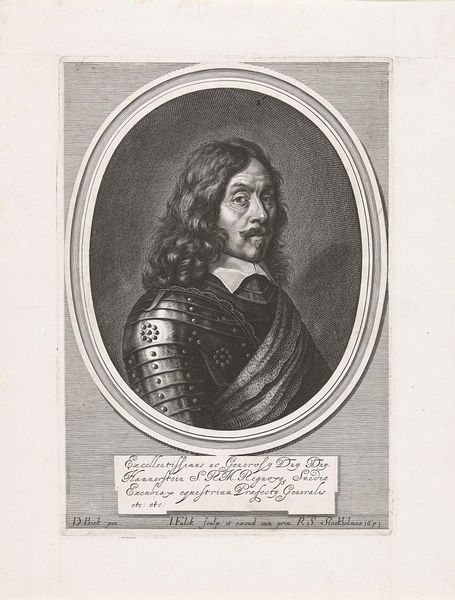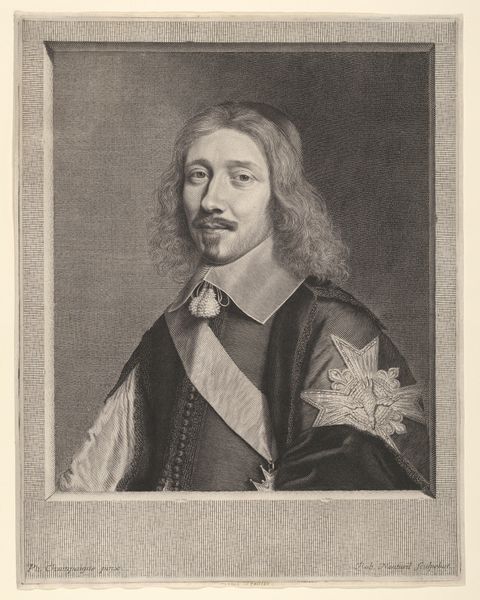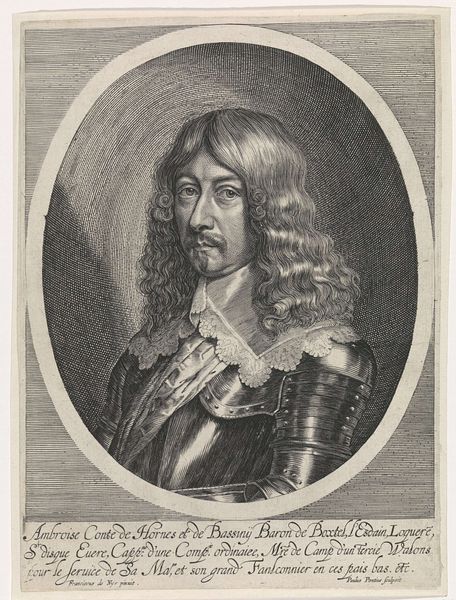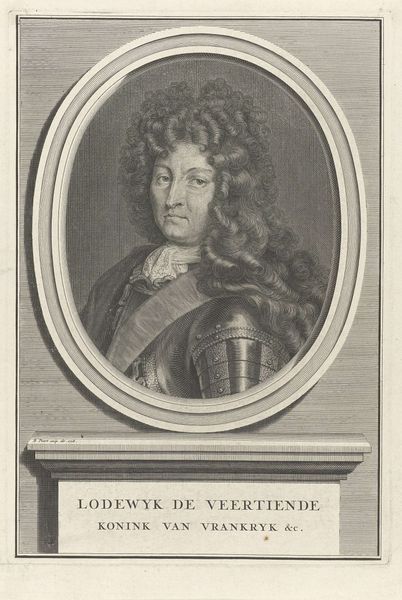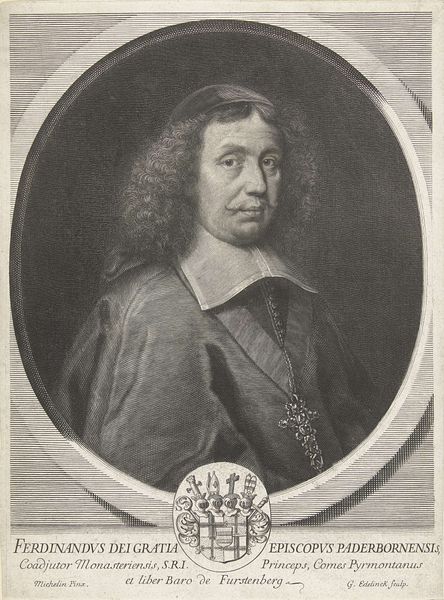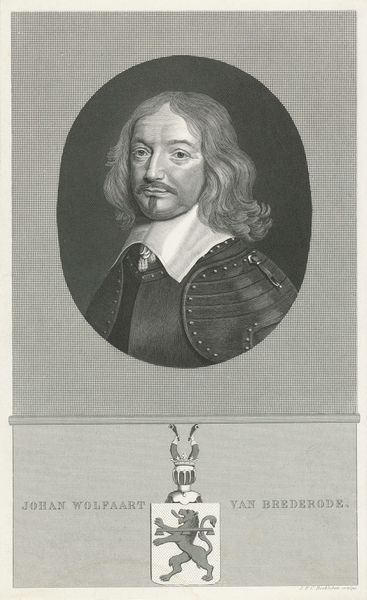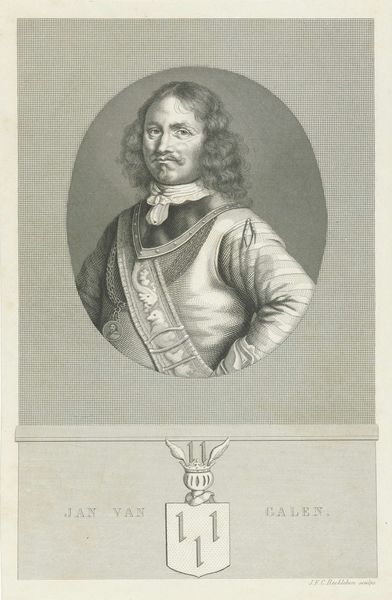
engraving
#
11_renaissance
#
history-painting
#
academic-art
#
engraving
#
realism
Dimensions: height 230 mm, width 148 mm
Copyright: Rijks Museum: Open Domain
Editor: So, this is "Portret van Cornelis de Witt", made between 1877 and 1879. It’s an engraving currently at the Rijksmuseum. It looks quite formal, almost like a stamp, but the details in the clothing are really catching my eye. What do you see in this piece? Curator: The choice of engraving as a medium, so long after its peak, speaks volumes. We have this prominent figure memorialized through a distinctly reproducible process. It democratizes the image, disseminating power through material means. Who would have owned such a print and how would they have related to it? Editor: That’s an interesting point! So, you’re thinking about how the process of making it accessible changes the meaning? What about the family crest; doesn’t that reinforce status? Curator: Certainly. But that crest, like the portrait itself, becomes a commodity, reproduced and consumed. The artist is producing goods intended for distribution. Were they commissioned? Who controlled this process of memorialization? The material tells a story about class and access in this late moment of manual production. Editor: So, you see the print less as a unique portrait, and more as a manufactured object reflecting a specific social order? Curator: Precisely. Consider the labour involved in creating the engraving versus, say, a painted portrait of the same era. The engraving demands a very different, repeatable engagement with the subject. That distinction collapses the supposed divide between art and craft. The social world impacts how it's made, circulated and consumed. Editor: I hadn't considered the production process in that way. That's a perspective shift for sure! Thanks, that gave me a lot to think about! Curator: It really reframes how we appreciate the work, doesn't it? Thinking about not just what it represents, but how that representation came to be.
Comments
No comments
Be the first to comment and join the conversation on the ultimate creative platform.


